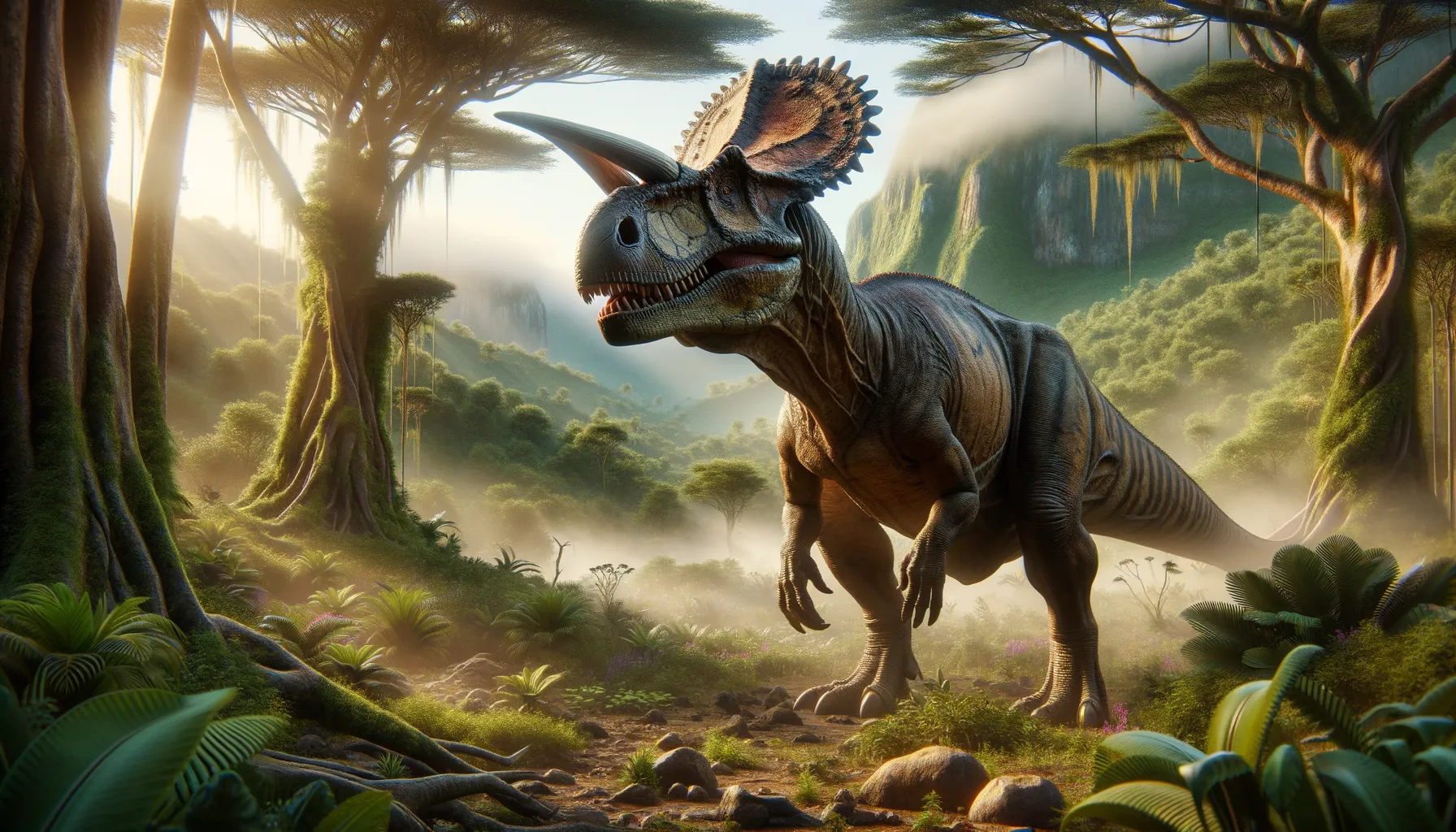
Majungasaurus
Madagascar's top Cretaceous predator.
Period
Cretaceous
Length
About 7 to 9 meters long.
Height
Stood around 2.5 meters tall at the hips.
Weight
Approximately 1,100 kilograms.
Majungasaurus was a large carnivorous dinosaur that roamed the land of Madagascar during the Late Cretaceous period. Known for its robust build and distinctive horn atop its skull, it was one of the top predators in its ecosystem. Fossils indicate that it had powerful hind limbs and a strong jaw, making it an effective hunter despite its relatively slower pace compared to other theropods.
Diet
Majungasaurus was a carnivore, primarily hunting smaller dinosaurs and possibly scavenging. Its robust jaw structure suggests it could crush bones, which might have helped it extract as much nutrition as possible from its prey.
Hunting
Majungasaurus likely used stealth and ambush strategies to catch its prey, leveraging its strong legs for short bursts of speed. Its keen senses would have been vital in tracking potential targets in its dense forest habitat.
Environmental challenges
Living in Madagascar during the Late Cretaceous, Majungasaurus faced a range of ecological challenges, including competition for food resources. Seasonal changes in climate may have affected food availability, requiring adaptability in its hunting strategies. Predatory pressures and potential territory disputes with other large carnivores would have been a constant aspect of its life.
Speed
Relatively slow, relied more on ambush.
Lifespan
Estimated around 25-30 years.
First discovery
First discovered in Madagascar in the 1890s.
Fun Facts
- Majungasaurus was a fearsome predator that lived about 70 million years ago in what is now Madagascar.
- This dinosaur had a short snout and a thick skull, which might have been used to fight other dinosaurs.
- Unlike many other dinosaurs, Majungasaurus had only four digits on its hands instead of the usual five.
- It is one of the few dinosaur species known to practice cannibalism, sometimes eating its own kind.
- The name 'Majungasaurus' means 'Majunga lizard,' named after the region in Madagascar where its fossils were found.
- Majungasaurus had a unique head crest that possibly served as a display feature to attract mates or intimidate rivals.
- It was a medium-sized theropod dinosaur, reaching lengths of about 6 to 7 meters, or about 20 to 23 feet.
Growth and Development
Majungasaurus grew rapidly during its early years, reaching maturity within its first decade. This fast growth rate was likely an adaptation to reduce vulnerability to predators. Once fully grown, it would have occupied the apex position in its ecosystem, enhancing its survival prospects. Skeletal evidence suggests a pattern of bone remodeling, implying active and ongoing development throughout its life.
Habitat
Majungasaurus inhabited the lush and varied environments of Late Cretaceous Madagascar, which included dense forests and river systems. These surroundings provided ample opportunities for both hunting and evading other predators. The region's biodiversity offered a diverse selection of prey, but also presented challenges in the form of seasonal fluctuations in climate and food availability.
Interaction with other species
Majungasaurus was likely the dominant predator in its environment, competing with other carnivorous dinosaurs for prey. Its interactions with other species were primarily predatory, although it may have occasionally scavenge. Prey species had to constantly be wary of its presence, shaping their own behaviors and adaptations.
Natural lifespan
Majungasaurus has a natural lifespan of about 25 years.
Reproduction
Majungasaurus, like other dinosaurs, reproduced by laying eggs. Little is known about specific nesting behavior, but it is likely that females laid clutches of eggs in protected areas. Nesting colonies might have existed to deter predators, providing a social aspect to its reproductive strategies.
Social behaviour
While solitary hunting behavior is often assumed for Majungasaurus, fossil evidence does not entirely rule out potential social interactions. Instances of healed injuries might suggest intraspecific conflicts. However, any group formations, if existed, would have been loose and temporary, primarily revolving around feeding or nesting grounds.
Fossil locations
Majungasaurus fossils have predominantly been found in Madagascar, where the most complete specimens have been recovered. This concentration of fossils has provided a detailed understanding of its anatomy and paleoecology. Lesser fragmentary remains have also been discovered in closely related rock strata within the region.
